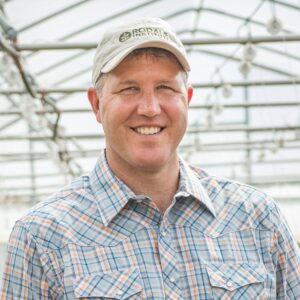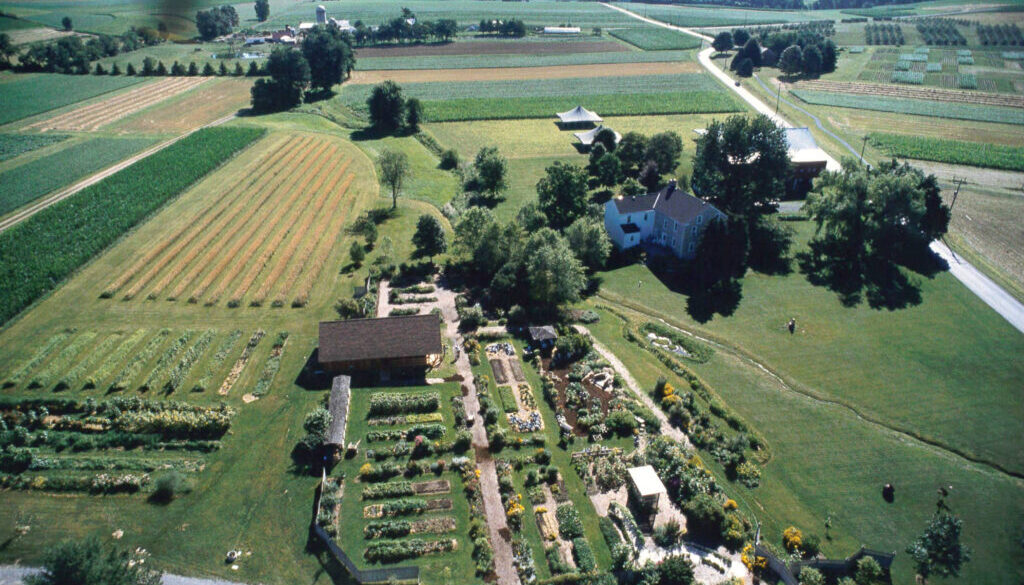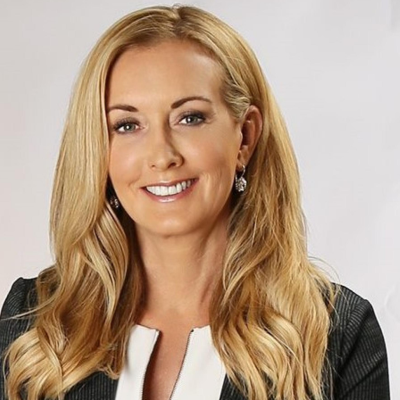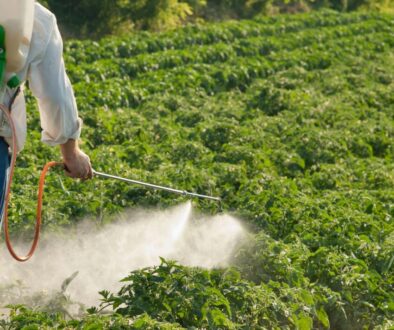Q&A: A look at the “turf war” over regenerative agriculture

Consumers looking for healthy foods grown without the use of chemicals have long been able to shop grocery aisle for products carrying an “organic” label, a designation associated with natural processes that focus on soil health, animal well-being, and protections of delicate ecosystems.
The roots of the organic movement stretch back more than half a century to the teachings of scientists and environmentalists who advocated for agricultural practices that contradicted efforts by large chemical companies to encourage farmers to use repurposed wartime chemicals to kill weeds and bugs in their fields. JI Rodale, founder of the Rodale Institute, was among those leading opposition to chemical farming.
Over the last several years, an approach called “regenerative” agriculture has been sprouting up alongside organic, with a growing number of agricultural producers working to have their products certified as regenerative. Proponents of regenerative farming say the practices involved in regenerative are similar to organic practices, and can mitigate harmful climate change, reduce water pollution, and make foods more nutritious as farmers focus on improving the health of soil, water, and ecosystems.
The two systems have some significant divergences, however, sparking debate over which is actually better for consumers, for farmers and for the planet. Under organic systems, farmers often will till their soil as a means to thwart weeds that can reduce crop yields. Regenerative systems reject tilling as highly detrimental to soil health, and use other methods to tackle weeds, including in some cases chemical weed killers. Herbicides and other pesticides are linked to an array of health risks as well as environmental problems.
The New Lede asked Dr. Andrew Smith, chief scientific officer for Rodale Institute, for his views on the state of the debate.
Q: A recent report from Friends of the Earth raised concerns about regenerative agriculture and highlighted what seems to be a growing battle between the regenerative agriculture movement and organic farming. Can you explain how you compare the two systems, and why this rancor is emerging?
A: I am not sure I would classify it as a growing battle. Maybe a turf war over the use of the word “regenerative.” There are really several systems and since each farm and farmer is different it is really a spectrum from degenerative farming to regenerative farming.
The history really goes back to the dust bowl and formation of the Soil Conservation Service, now the Natural Resources Conservation Service of the US Department of Agriculture. The goal was to stabilize soil that was blowing across the country in the 1930’s and continues to move through erosion generated by wind and rain today. This was a great thing because we finally recognized soil as a valuable resource, and later water, biodiversity, timber, and other natural resources were recognized to have inherent worth.
Tillage leaves the soil exposed to these erosive processes, which is why scientists sought to reduce or eliminate tillage from crop production. This led to increased use and development of herbicides and also genetically modified crops that were tolerant to herbicides, meaning they weren’t killed when directly sprayed by weed killers. This was a breakthrough that allowed much better weed management that led to higher yields and increased use of herbicides. The increased use of glyphosate, the active ingredient in Roundup, has been 16x or more since GMO crops were introduced. Synthetic chemical herbicides have always been banned for organic farming so organic farmers have relied on tillage, cultivation, and other technologies to manage weeds. But that means more tilling and soil disturbance and potential soil erosion. So there is the start of the controversy – is it better to spray herbicides to reduce tillage and soil erosion but contaminate the environment and humans OR is it better to farm organically, thereby eliminating chemical contamination but leaving the soil more prone to erosion.
The word regenerative to describe agriculture is believed to be first used by Bob Rodale to describe a process of continuous improvement that goes beyond basic organic that simply eliminates the use of chemicals. So Rodale Institute and many organic farmers have a reverence for the use of the word regenerative and reserve it for truly regenerative farming that respects the land as well as the people and livestock on the land. In modern agriculture, as it became clear in the 60’s and 70’s that agricultural intensification was leading to adverse environmental effects and specialization that resulted in less diverse farms, the term “sustainable agriculture” started to be used to describe an approach that was more environmentally friendly and eventually included a definition from the UN FAO that included environment, social, and economic recognition. Many advocates argue that since the word “sustainable” was overused, some companies– for marketing purposes– have dropped the use of “sustainable” and switched to “regenerative.” But they didn’t do anything different. The same has happened on farms and in agricultural research – the word sustainable has simply been replaced with regenerative. Reduced tillage was always considered a sustainable practice and now it is being called a regenerative practice. But by itself, it is just a practice. And when massive amounts of herbicides are needed to achieve it, it can hardly be called regenerative.
Q: Proponents of regenerative say that organic farmers often till their soils and this is highly destructive to the environment in many ways. What is your response to that?
A: In conventional agriculture, there is data to support the claim that tillage is not good for maintaining long-term soil health and it can lead to soil erosion from wind and rain. That erosion carries sediment and nutrients to bodies of water where they can be contaminants. But, most of that data was performed using chemical based agriculture, in limited crop rotations, and not in an organic system. In a systems approach that includes keeping the soil covered with diverse rotations of crops, perennial crops, cover crops and green manures and use of carbon based and natural fertilizers such is typical for organic management, soil health is maintained regardless of tillage. We have 45 years of data from our Farming Systems Trial at Rodale Institute to draw on as well as other systems trials across the US and world that have found similar results. Even reductionist, shorter term studies that include cover crops and compost and manure alongside with tillage find similar results.
Q: Some of the leaders within the regenerative movement say the practices move farmers down a path that often leads ultimately to organic farming. Can regenerative be a pathway to bring more farmers into organic production?
A: I would hope that that was true, but not really and not the way most of so-called regenerative farming is currently being practiced. Being so-called “regenerative” by continuing or increasing the use of chemical inputs keeps those farmers on the input treadmill and limits the feasibility of seeking management solutions that preclude these chemical inputs. And therefore often does not set a farmer on a path towards organic.
Q: What are the key principles of “regenerative organic systems” and are many organic farmers practicing these methods?
A: This is such a long answer for me since I see it philosophically as well as practically. But at a high level – “Degenerative” is taking (extracting and exploiting the land, people and animals for the gain of another) and “Regenerative” is giving (nurturing and respect and giving more than is taken).
Strategies:
- Keep the soil covered and as much as possible with living, growing plants. Organic farmers cannot just purchase fertilizer so they tend to use cover crops and living mulches as sources of fertility as well as good crop rotations that may also include perennial plant cover and leguminous (nitrogen fixing or pulling nitrogen from the atmosphere to the plant) plants. So organic farms tend to have a more diverse set of living plants growing for a longer period of time than most conventional farms.
- Use natural and carbon-based fertility sources. These include manures, compost, green manures, mulches, and natural fertilizers. These not only provide fertility but also feed soil life. Natural fertilizers require microbial activity to truly break down and become available so they are less prone to loss to water or air and therefore are less likely to contaminate the environment than synthetic, soluble fertilizers used in most conventional farming. Organic farms are required to use these sources of fertility. This leads to more soil carbon and improved soil health.
- Increase biodiversity. This is achieved in many ways. Organic farms tend to have a more diverse set of crops because this is required to reduce pest pressure without pesticides and improve fertility management. Biodiversity can be increased in many ways – pollinator habitat, riparian buffer plantings, diverse habitats, bat boxes. It is a long list. Many organic farms encourage this diversity since it results in natural pest management such as insects, birds and bats that are predators of insect pests.
- Reduce soil disturbance. Mostly through tillage which is the topic we started with. We recognize the benefit and therefore we are seeking to reduce soil disturbance although the current and best management tools for organic weed management includes tillage and repeated shallow cultivation that results in more soil disturbance. But with research and innovation we are starting to provide tools that can reduce soil disturbance and maintain crop yields and farm profitability.
- Integrate livestock. This results in natural fertility cycling to reduce or eliminate the need for external fertility inputs, organic or conventional, and with proper management can improve soil health. It should also respect the livestock if a system is called regenerative. The livestock should be able to exhibit their inherent behaviors and should not cause environmental contamination from manure.
- Context. Some have included this strategy to mean grow the appropriate crop for its environment. I embrace this because very often we use inputs to ‘force’ a crop to grow where it really shouldn’t be growing.
Q: What would you like to see from policy makers in Washington – and the Make America Healthy Again (MAHA) movement – with regards to improving our food system?
A: Personally, I believe farms should be growing a minimum of three crops in a rotation to be eligible for any government assistance, including crop insurance. Perhaps there are certain exceptions such as non-draining soil where crops such as rice can grow but very few others. But a plan for rest and rejuvenation for those fields should be demonstrated prior to those farms receiving government assistance. Good research over decades has demonstrated that crop rotations and crop diversity can cut the need for pesticides by 50-100%.
(Featured photo from Rodale Institute.)




